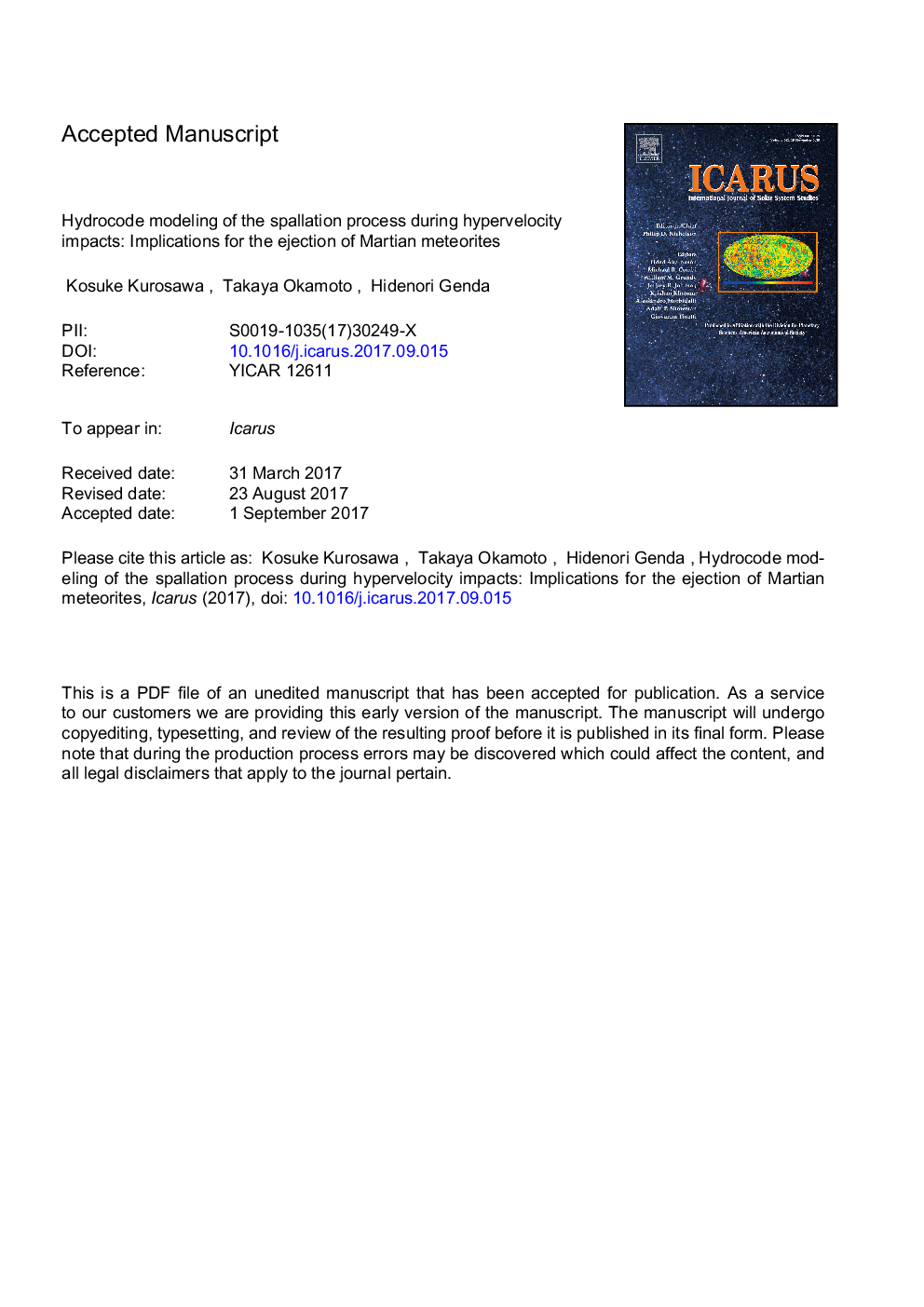| کد مقاله | کد نشریه | سال انتشار | مقاله انگلیسی | نسخه تمام متن |
|---|---|---|---|---|
| 8134683 | 1523490 | 2018 | 77 صفحه PDF | دانلود رایگان |
عنوان انگلیسی مقاله ISI
Hydrocode modeling of the spallation process during hypervelocity impacts: Implications for the ejection of Martian meteorites
ترجمه فارسی عنوان
مدل سازی هیدروکدال فرایند تخریب در اثر تاثیرات هیرولوسیته: پیامدهایی برای تخلیه شهاب سنگ های مریخ
دانلود مقاله + سفارش ترجمه
دانلود مقاله ISI انگلیسی
رایگان برای ایرانیان
کلمات کلیدی
موضوعات مرتبط
مهندسی و علوم پایه
علوم زمین و سیارات
علوم فضا و نجوم
چکیده انگلیسی
Hypervelocity ejection of material by impact spallation is considered a plausible mechanism for material exchange between two planetary bodies. We have modeled the spallation process during vertical impacts over a range of impact velocities from 6 to 21Â km/s using both grid- and particle-based hydrocode models. The Tillotson equations of state, which are able to treat the nonlinear dependence of density on pressure and thermal pressure in strongly shocked matter, were used to study the hydrodynamic-thermodynamic response after impacts. The effects of material strength and gravitational acceleration were not considered. A two-dimensional time-dependent pressure field within a 1.5-fold projectile radius from the impact point was investigated in cylindrical coordinates to address the generation of spalled material. A resolution test was also performed to reject ejected materials with peak pressures that were too low due to artificial viscosity. The relationship between ejection velocity veject and peak pressure Ppeak was also derived. Our approach shows that “late-stage acceleration” in an ejecta curtain occurs due to the compressible nature of the ejecta, resulting in an ejection velocity that can be higher than the ideal maximum of the resultant particle velocity after passage of a shock wave. We also calculate the ejecta mass that can escape from a planet like Mars (i.e., veject > 5Â km/s) that matches the petrographic constraints from Martian meteorites, and which occurs when Ppeak = 30-50Â GPa. Although the mass of such ejecta is limited to 0.1-1Â wt% of the projectile mass in vertical impacts, this is sufficient for spallation to have been a plausible mechanism for the ejection of Martian meteorites. Finally, we propose that impact spallation is a plausible mechanism for the generation of tektites.
ناشر
Database: Elsevier - ScienceDirect (ساینس دایرکت)
Journal: Icarus - Volume 301, February 2018, Pages 219-234
Journal: Icarus - Volume 301, February 2018, Pages 219-234
نویسندگان
Kosuke Kurosawa, Takaya Okamoto, Hidenori Genda,
